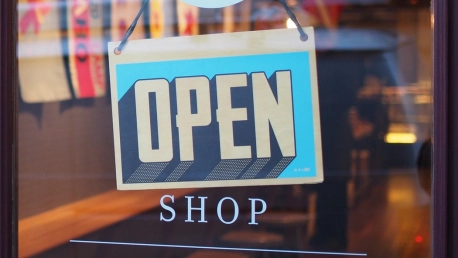As the year 2016 stretches out ahead of retailers everywhere, it is customary to estimate what important changes it will bring. The upsurge of technology in general, laying down the premises for the Internet of Things is bound to infiltrate even further the retail sector. Many specialists are giving their opinions on the most important, if not disruptive, tech devices that retailers expect to see in stores or affecting their online businesses. What are this year’s retail tech trends?
The 2016 retail tech trends as they appear online
The most important retail tech trends are, according to Tech.co article:
- Almost every PoS system going mobile by the end of this year;
- Location-based marketing targeting smartphones and wearable devices;
- Expansion of in-store technologies, especially digital displays and VR technologies;
- Survival of brick and mortar stores only for those retailers who tune their omnichannel strategies very well, and/or can afford the costs of keeping such stores.
While the basic trend of stores going even more digital remains a commonly estimated trend, a 2015 CIO article finds other interesting developments to follow in 2016’s retail world, such as proximity marketing implementation via beacons, the coming of biometrics into e-payment (and of various other authentication methods), more straightforward online shopping platforms, and an ensuing boom of mobile e-commerce, once the online retailers have adjusted to the particular demands of mobility and personalized offers.
Another tech service that has proved rather timid so far might also take off. Self-service options could be tuned for a better customer experience, therefore become more popular. Self-service kiosks embedded with digital interaction opportunities could prove satisfactory from the customer experience point of view. All the while the human staff will be redirected towards other types of customer interactions, where real-time live information and advice is welcomed and much needed.
Marketing retail tech trends
The impact of growing marketing automation will affect retailers in what customer data, marketing strategies and customer personalization is concerned.
Better data collecting systems would deliver more relevant data to the marketers, which will have to turn the data into relevant insights and personalized, customer-centric campaigns, price-determination systems and other sales and conversion incentives.
Tailoring all marketing strategies in correlation with the predominant user interfaces also reshapes the entire marketing experience, from design, websites and applications, to the shopping cart steps, digital signage and in-store displays.
Online stores and e-commerce clearly dominate retail marketing; nevertheless this crowded sector might spark an alternative interest for more traditional market channels, such as printed ads, TV and radio advertising or public digital displays. You may check here some early 2015 estimation figures on online businesses and various technologies’ implementation, in order to get a better perspective on what happened in 2015 and on what retailers’ plans were for the year that just ended.
Purchase retail tech trends
In what the purchase process is concerned, retailers’ mobile platforms still represent a monetization opportunity to be fully developed and brought to fruition. Offering the possibility to increase brand awareness and customer engagement, such platforms take the shopping experience to the mobile screens and, provided it is a flawless experience, the customers decision, validation and actual purchasing actions can happen almost instantly. Shoppable videos (YouTube) and buyable buttons (Pinterest) have made the online news in 2015 and may continue their expansion in 2016.
The much-talked-about omnichannel presumes that customers’ orders come in from all retail channels owned by a company to be fulfilled from its central stock pool. The supply chain experience should once more be flawless. Every possible order-delivery-payment cycle should be seamlessly integrated into the entire customer experience, for the customer to manifest his or hers will at ease. Being able to buy whenever, wherever went from being a trend to becoming the standard – and all retailers try to raise up to this challenge. Any retailer that masters the complexity involved in this omnichannel paradigm is indeed a modern retailer.
Various means of adding to the standard shopping experience might just make the difference in-between competitors: a better return policy, real-time delivery, competitive customer services or other innovative elements could tip the scales when it comes to choosing between similar retailers. In a more futuristic view, this article sketches emerging, more futuristic trends such as drive-through pick-up locations, immersive shopping experiences and niche specialty stores.
Why the “disruptive” changes?
Although many of the trends mentioned above are familiar to lots of retailers and may find the business owners already involved in different stages of implementation (omnichannel, mobile platforms, adoption of in-store technologies), the retail tech environment still presents mixed stages of technology adoption. Retailers that adopted such new technologies need the time to master all their implications, and this time may not be equally available to all.
Many developing software programs/algorithms and devices become commercially attainable. It is only logical that some of them would compete with each other and some will prove successful while others will be obsolete by 2017 and 2018. There is no secret method of telling them apart and retailers should be wise when choosing, while in the same time make fast moves.
The changes might prove disruptive because clearly this is a turning point in retail. Nevertheless this is an experimentation period, and the cyber-security specialists for example warn us that the emerging IoT finds cyber-security yet unprepared. From e-payment terminals to connected devices and smart home appliances that enter the shopping process, all new tech comes with certain risks.
However, retail has always dealt with changing trends, modernism and risks – so potentially disruptive tech is just another challenge to be accepted. We will see an interesting retail year this year – and we hope better experiences will shape better retailers.









